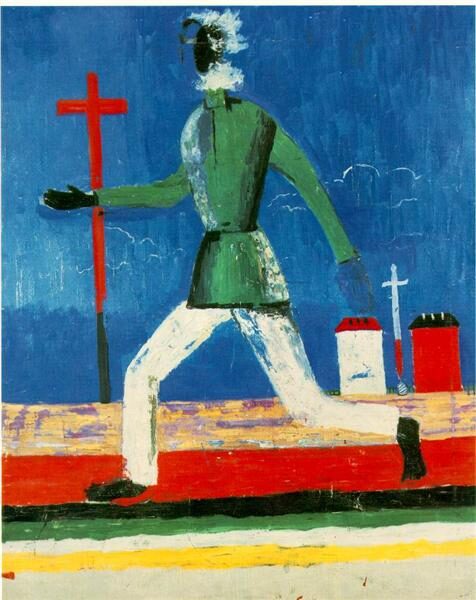“Malevich was the only artist who showed the tragic situation of the Ukrainian peasants during forced collectivization in the USSR” – wrote Jean-Claude Markade, French art historian, and author of several books about Malevich. In 1933, Malevich painted a faceless man between a sword and a cross, known as “The Running Peasant”. It is devoted to Holodomor. The red color represents blood.

His other pencil drawing, known as “Where there is a hammer and sickle, there is death and hunger” (words from a folk song popular in the 1920s and 30s), depicts three figures whose faces have been replaced by a hammer and sickle, a cross and a coffin.
Like many prominent figures of Ukrainian culture, Kazimir Malevich was a victim of Stalinism. The artist was planning to move from Leningrad to Kyiv for permanent residence, but in the 1930s Stalin declared war against all highly-qualified professionals from different fields including art, calling them “bourgeois intellectuals”.
Kyiv Art Academy was “cleansed” of prominent professors and artists – Lev Kramarenko, Yevhen Sahaidachny, Fedir Krychevsky, Mykhailo Boychuk, and Kazimir Malevich.
In 1930 Malevich was arrested and tortured by Soviet OGPU in Leningrad. They sprayed water under pressure in his urethra – demanding that he confess to espionage. Prostate disease and other health issues killed Kazimir Malevich on May 15, 1935.